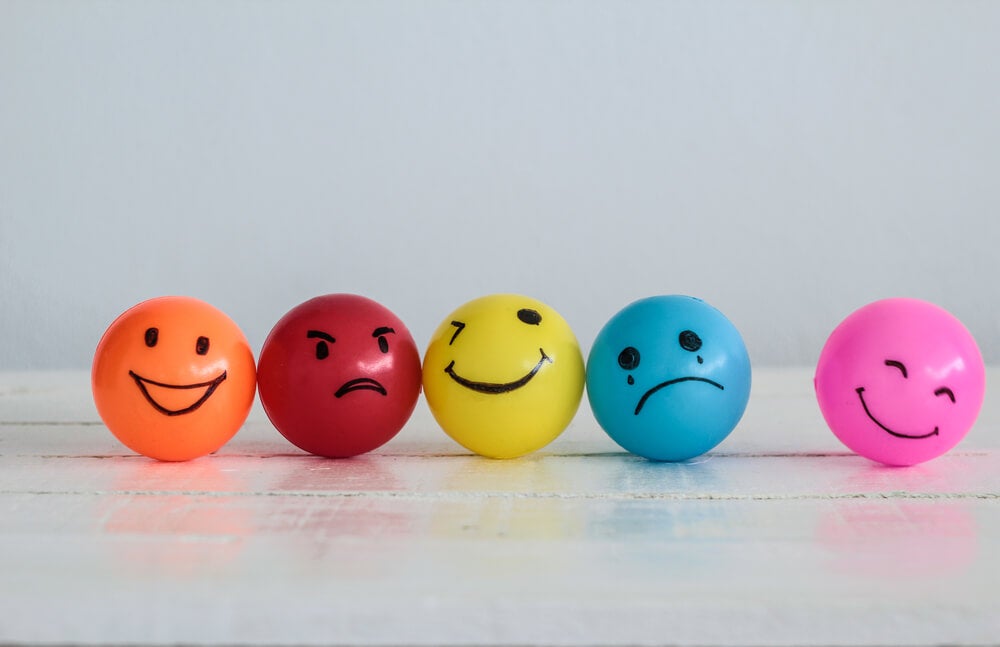The strength of your emotions even precedes thought itself. We must not forget that people are, after all, emotional beings who learned to think just over 100,000 years ago. Emotions, in turn, have always been the main root of our being and our brain. A set of essential processes that guarantee our survival.
Assuming this idea isn’t always easy. First of all, it’s not easy, because most of us like to think that we have complete and complete control over everything we do and decide.
- However.
- We tend to ignore the fact that much of our behavior is governed by a powerful emotional universe.
- Which often does not manifest itself clearly and that we are not always aware of.
Stop and think about it. When we wake up in the morning, we do it in a certain emotional state. Sometimes we’re more motivated, sometimes we sleep a little more. The way we feel is going to have a big influence on our day.
The first impulse that measures each step we take, whether large or small, has an emotional burden, it is true that, in many cases, we try to reason and understand each decision we make, but, in principle, it is the emotions that give us the first impulse and leave its mark.
At the same time, we cannot deny that many of our purchases are mediated by emotions, as well as by our emotional and social relationships.
Its transcendence, the way it permeates everything and its great complexity, goes through everything we do and how we react to our environment, that is an undeniable fact.
“I don’t want to be at the mercy of my emotions. -Oscar Wilde, The Portrait of Dorian Gray-
One thing that is often repeated in any self-help or emotional management book is that “you have to learn to control your emotions. “In these textbooks (as well as in popular language), there is no shortage of terms like “Handle,” “Master?”And ‘face it’.
Many might think, reading these words, that an emotion is almost like a horse, that it can be domesticated and directed wherever we want.
Not bad? No one will be able to control or administer anything if they don’t understand the basics of what’s in their hands, or rather, if they don’t understand the neural depths of their brain.
Neurologist Antonio Damasio helps us get closer to this universe and, in books like In Search of Espinosa and The Strange Order of Things, offers us some very interesting stories.
An emotion is essentially a chemical and neuronal response, this reaction is generated in our brain when it processes a stimulus that requires a certain type of behavior on our part.
For example, I see a snake, I know it can be a danger, so it’s normal for me to walk away without thinking, in fact, it’s an internal chemical response that generates many processes in our body with one goal: to help execute a behavioral response.
The strength of your emotions is meant to help you react to what’s going on around you. This allows you to survive and recover homeostasis, i. e. inner balance and well-being.
In general, however, there is a fundamental and essential problem for most of us: we do not know what our emotions mean to us.
Fear, sadness, anger, frustration? Many of these emotional states are labeled by us as negative, but they also have one purpose: they warn us that something is wrong and to which we must react.
However, it is common to let emotion remain there, deep in our being, altering homeostasis and creating discomfort.
Emotion always precedes feeling and this is also what, on many occasions, precedes thought itself, that is why in books like In Search of Espinosa and How does the brain work? Francisco Mora? We can understand the importance of understanding the difference between emotions and feelings. Emotions would come from the body and feelings from the mind.
The first thing we experience is an emotion, first and foremos sorry for everything that happens to us, in the face of every situation, the first thing we feel is an emotion.
The mental experience that we have after all the changes that emotion generates in our body forms feelings, the feelings, in turn, are the fuel that gives a boost to the mind, that gives us motivation or, on the contrary, that blocks us.
It is precisely in the last moment of our evolution when we achieve a better understanding and control of our emotions. With the development of the frontal lobe and the prefrontal lobe, it has been possible to become aware of feelings and emotions to shape more refined, creative behaviors, rational and powerful.
We must not forget that emotion and thought can never be separated; together, give us greater impetus. An emotion controlled and put in our favor by thought usually generates more innovative and positive behaviors.
The strength of your emotions is undeniable, and often they are the ones that measure much of your behavior, and our feelings permeate us in ways that can fill us with hope or block us completely in the face of different thoughts.
That is why it is important not only that we know what an emotion is, but also that we know how to manage it, manage it and put it in our favor.
It’s not an easy task. It takes time, a self-awareness that allows us to be connected to what happens within us, responding rationally all the time.
As Daniel Goleman rightly says, we have two minds, one who thinks and the other who feels. Happiness, true well-being, is about making both act in the same direction. Think!

